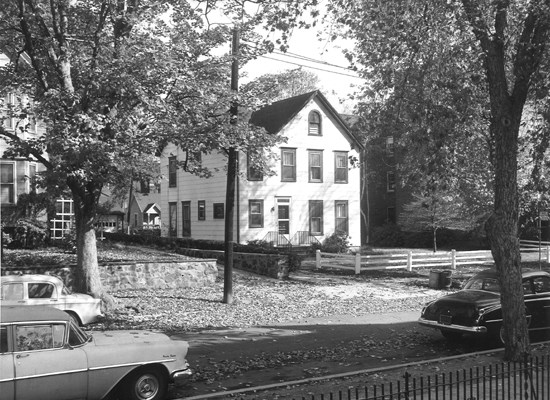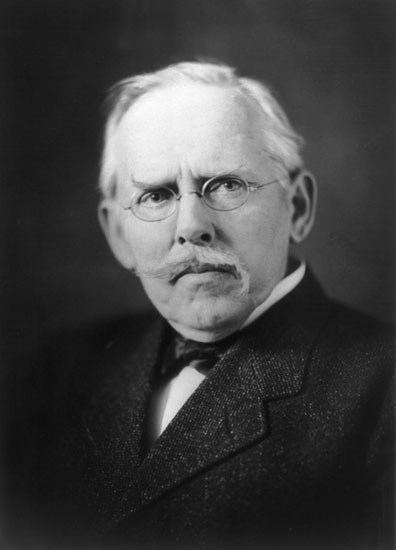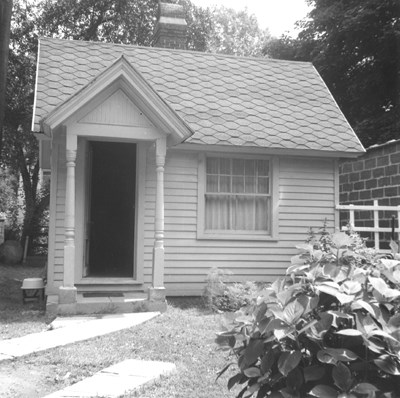
NPS Photo
Jacob Riis House
New York, NY
Designated an NHL: November 24, 1968
Designation withdrawn: 1973*
*A formal dedesignation process was created in 1980. Before then, a property that no longer met NHL criteria was simply removed from the official list.
During the last decade of the nineteenth century and the first decade of the twentieth century, Jacob Riis waged a successful campaign to ameliorate slum conditions in New York City and secure reform legislation to protect the downtrodden and exploited. A journalist by profession, Riis enunciated his philosophy in books such as How the Other Half Lives (1890) and Children of the Tenements (1903), which reached a national audience and helped prepare the way for urban reform in other cities. Riis had the house on Richmond Hill built in 1888, and he lived there with his family until 1913. He wrote many of his famous works in the small cottage behind the house that he used as a study.
Jacob August Riis was born in Ribe, Denmark, on May 3, 1849. He was educated by his father, a teacher, and was later apprenticed to a carpenter. Riis immigrated to the United States in 1870, where he worked as a coal miner, farmer, brick-maker, and peddler. In 1877, he obtained a job as a police reporter for the New York Tribune and began a newspaper career that brought him wealth and fame.
During the 1870s, Riis was deeply moved by conditions in the crowded tenement districts of New York. Vivid memories of poor treatment at police lodging houses during his first years in America remained permanently with him and, as a police reporter, he had the opportunity to study slum problems in depth. Riis soon emerged as the city's leading journalistic reformer. Although the philosophy he espoused was one of hard work and rugged individualism, he recognized that a change in environment would have to precede a triumph of industry, thrift, and virtue. He waged a campaign of words against the conditions and corruptions that abounded in the slums.

NPS Photo
Riis attacked slums from every direction. He was interested in the social as well as the physical improvement of degenerated neighborhoods. Riis led efforts to abolish rear tenements and police lodging houses, and to improve the city water supply. He demanded and obtained child labor laws, playgrounds for children, and a truant school, and he succeeded in opening classrooms to boys' and girls' clubs. Riis worked to provide lights for dark tenement hallways. He was responsible for the removal of bake-shops, which too often caused fatal fires, from the basements of tenement buildings. Perhaps his crowning achievement was the destruction of the worst tenement block in New York City, called Mulberry Bend. In its place the city created Mulberry Park and philanthropists built the Jacob A. Riis Neighborhood House.
As the leading reporter for a national newspaper, the Evening Sun, Riis reached millions of readers across the country. His books had nationwide appeal and impact. Chief among them were How the Other Half Lives(1890), Out of Mulberry Street (1898), The Making of an American (1901), The Battle with the Slum (1902), Children of the Tenements (1903), Theodore Roosevelt with Children (1904), Is There a Santa Claus? (1904), and The Old Town (1909). Riis also made use of flash photography, a new technology, to document dark tenements and slums. These images, which were reprinted as line drawings and halftones in his articles and books, dramatized the poor conditions that he described.
One of Riis's chief supporters in the early years was Theodore Roosevelt, then police commissioner of New York City. As Roosevelt was elected to higher political offices, first the governorship of New York and then the presidency of the United States, he continually offered his friend high government appointments, but Riis always declined on the grounds that he was too busy for politics.

NPS Photo
The house at 84-41 120th Street in the Richmond Hill area of Queens, New York, was Riis's home for 25 years and was where he wrote many of his notable books and articles. Riis picked out the lot and had the house built in 1888. He lived there until 1913, a year before his death at his country house in Barre, Massachusetts. The two-story house on Richmond Hill was four bays wide, with a gabled roof and clapboard siding. Sometime after the original house was constructed, Riis had a study built at the back of the property. Reminiscent of a one-room schoolhouse, it also had a gabled roof and clapboard siding.
The designation of the house as a National Historic Landmark in 1968 marked the culmination of a three-year campaign by members of the Native New Yorkers Historical Association to have the historical significance of Riis's house recognized. At the time of its designation, the house and study were in good condition, having undergone a general renovation that included new roofs and siding. The basic structural integrity of the buildings remained intact. Just five years later, however, the property was in serious disrepair. In April 1973, National Park Service staff received word that the house and its outbuildings had been torn down.
Last updated: August 29, 2018
